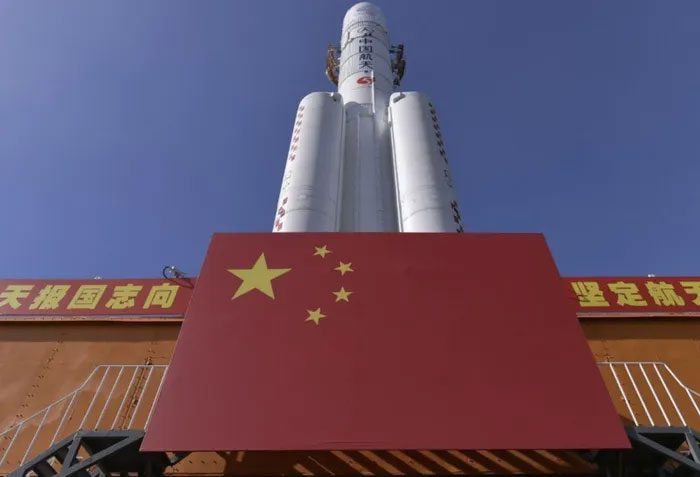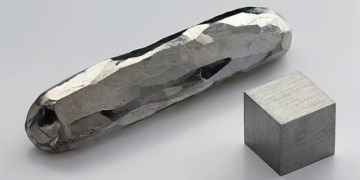This engine will be used in future missions to the Moon, Mars, and beyond. Its thrust is more than double that of NASA’s competitors.
A space research institute in Beijing has successfully tested a new rocket engine that is twice as powerful as its American counterparts in the race to send astronauts to the Moon.
According to the South China Morning Post, the China Aerospace Science and Technology Corporation (CASC) reported that the ground test was “completely successful” on September 5.

China aims to send humans to the Moon before 2030. (Photo: AP).
The aforementioned rocket engine will be used to launch China’s Long March 9 rocket, which is currently under development for the mission to send astronauts to the Moon.
This upper-stage rocket engine can generate a thrust of 25 tons—more than double the thrust produced by the RL10, an American-made rocket engine expected to return astronauts to the Moon after more than half a century.
The upper-stage rocket engine is used at high altitudes to provide additional thrust to propel spacecraft to their destinations.
CASC stated that this is the “largest closed-cycle expansion engine test in the world”, marking a “breakthrough” in developing critical technology for heavy-lift launch vehicles.
The closed-cycle expansion rocket engine is the most efficient power source for human spaceflight. This engine can convert a small amount of liquid hydrogen into high-pressure gas using waste heat.
The gas drives turbines to increase the pressure of hydrogen and oxygen in the fuel pumps. The gas then enters the top of the combustion chamber to be used as fuel.
This closed expansion cycle is more efficient than the combustion process in conventional rocket engines because it does not require the rocket to carry extra gas to power the pumps.
The United States has played a leading role in the development of this technology. The RL10 engine has powered rockets since the 1960s. Russia and Europe have also developed rocket engines with similar or greater thrust capabilities.
According to Mr. Chu Baoxin, the chief scientist of the engine project at the Beijing Aerospace Propulsion Institute, increasing the thrust of the closed-cycle expansion engine is quite challenging.
A complex mission like landing on the Moon requires engines to turn on and off multiple times. According to Mr. Chu’s research team, each time the engine is turned on or off, it must generate a surplus of heat and transfer it to the liquid hydrogen, converting it into gas and bringing the fuel pump back to normal operating speed as quickly as possible. When the engine is at full throttle, the pressure of the vaporized hydrogen can become extremely high and difficult to manage. The larger the engine, the more severe these issues become.
Chinese rocket scientists have stated that they have found a method to increase thrust. They invented a new heat exchanger that includes many rib-like components capable of absorbing heat from the surface of the combustion chamber and converting it into liquid hydrogen with unprecedented efficiency.
The components are made using the latest 3D printing technology to create an extremely smooth surface that can accelerate heat exchange much faster than traditional components.
The researchers also used a new titanium alloy to manufacture gas-driven fuel pumps that can maintain high performance under harsh conditions.
According to scientist Chu, sending Chinese astronauts to the Moon will require four new engines to operate together.
China and the United States are in a new race to the Moon. The Artemis program, led by NASA and involving about 20 member countries, aims to send American astronauts to the Moon by 2025.
To carry out this program, NASA has built the most powerful rocket ever, called the Space Launch System, but it is currently sitting on the launch pad awaiting its first test flight, which has been delayed multiple times.
Meanwhile, China has partnered with Russia to build an international research station on the Moon and aims to send an astronaut to the surface of this celestial body before 2030.
China’s heavy-lift rocket for the Moon mission is still under development.




















































